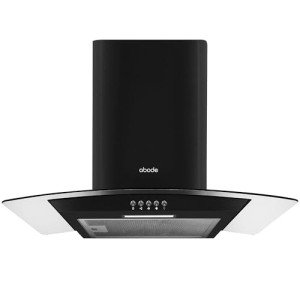
Kitchen Extractor Hood
Añadir un comentario SigaDescripción
-
Fundada Fecha julio 13, 1992
-
Especialidades Pastelero
-
Publicado Trabajos 0
-
Ver 3
Descripción De La Empresa
20 Trailblazers Lead The Way In Cooker Extractor Hood
Understanding Cooker Extractor Hoods: A Comprehensive Guide
In modern kitchens, the cooker extractor hood is more than just a device; it is an essential element that guarantees a comfy and clean cooking environment. This blog site post dives deep into what cooker extractor hoods are, their functions, different types, key factors to consider for choice, and frequently asked questions. Whether house owners are refurbishing their kitchens or simply aiming to update their cooking home appliances, understanding the function of an extractor hood can help make informed decisions.

What is a Cooker Extractor Hood?
A cooker extractor hood, likewise referred to as a range hood or kitchen hood, is a gadget installed over the cooktop or stove. Its primary function is to ventilate the kitchen by eliminating air-borne grease, smoke, steam, and odors produced throughout cooking. This not just improves air quality but likewise helps in preserving the kitchen’s tidiness.
Functions of Cooker Extractor Hoods
The main functions of an extractor hood include:
- Filtration: Removing airborne particles and odors through filters.
- Ventilation: Providing fresh air by drawing in stale air, grease, and smoke.
- Lighting: Offering lighting over the cooking location for much better exposure.
- Heat Regulation: Preventing excess heat from building up in the kitchen.
Types of Extractor Hoods
Cooker extractor hoods can be found in different types, each suited for different kitchen designs and cooking designs. Below is a table summing up the different types:
| Type | Description | Pros | Cons |
|---|---|---|---|
| Wall-Mounted | Connected to the wall above the stove. | Effective suction, space-saving | Needs wall space, installation can be complicated |
| Under-Cabinet | Fits beneath kitchen cabinetry. | Discreet, hassle-free for small areas | May have lower suction power |
| Island | Suspended from the ceiling, perfect for kitchen islands. | Aesthetic appeal, efficient ventilation | More pricey, might need professional installation |
| Downdraft | Developed into the cooktop, increases throughout usage and pulls back when not required. | Sleek style, conserves overhead space | Usually less effective than standard hoods |
| Filterless | Utilizes innovative filtering innovation, decreasing grease and smells without standard filters. | Less maintenance, longer life-span | Normally greater rate point, may not fit all kitchen designs |
Secret Considerations for Choosing a Cooker Extractor Hood
When picking a cooker extractor hood, several aspects ought to be thought about to optimize effectiveness and guarantee viability for individual kitchen requirements:
1. Size
Ensure the hood is at least as wide as the cooktop. Optimum sizing is necessary for reliable air capture. For a much better fit, think about:
- Standard cooktops: 30 inches hoods
- Professional cooktops: 36 inches or bigger hoods
2. Suction Power (CFM)
The air flow of the hood is measured in Cubic Feet per Minute (CFM). A higher CFM indicates better ventilation, which is crucial for heavy cooking.
Suggested CFM:
- Light cooking (e.g., boiling, steaming): 200-300 CFM
- Moderate cooking (e.g., sautéing, frying): 300-600 CFM
- Heavy cooking (e.g., grilling, wok cooking): 600+ CFM
3. Ducted vs. Ductless
- Ducted: Ventilates outside, highly effective but requires installation of ductwork.
- Ductless: Filters air and recirculates it back into the kitchen; setup is easier however might not be as effective.
4. Sound Level (Sonnes)
Pay attention to the noise level, particularly in open-concept homes. Look for hoods that run silently, preferably creating less than 60 decibels on high speed.
5. Style and Aesthetics
Pick a hood that matches the general kitchen decoration. Alternatives can range from modern stainless steel to traditional styles that blend effortlessly.
6. Ease of Maintenance
Consider designs with removable, dishwasher-safe filters to reduce cleansing efforts. Some models come with filter tips or indications to alert users when a modification is needed.
Advantages of Installing a Cooker Extractor Hood
Integrating a cooker extractor hood into the kitchen offers several notable benefits:
- Improved Air Quality: Filters and circulates fresh air, lowering cooking odors.
- Boosted Comfort: Minimizes heat and steam retention.
- Cleaner Kitchens: Reduces grease build-up on cabinets and walls.
- Aesthetic Appeal: Modern hoods work as decorative elements.
Frequently Asked Questions (FAQ)
1. How frequently should I clean my cooker extractor hood?
It is advised to clean up the filters every 1-3 months, depending upon usage frequency. Regular cleaning avoids grease accumulation, guaranteeing ideal efficiency.
2. Can I install a cooker extractor hood myself?
While some designs are designed for simple DIY setup, complex ductwork or heavy designs may need professional setup to ensure safety and performance.
3. How do I determine the best CFM for my kitchen?
Step your cooktop measurements and think about cooking designs. A general guideline is 1 CFM for every single 100 BTUs of the stove’s maximum heat output.
4. What kind of hood is best for a small kitchen?
Under-cabinet hoods or downdraft models are perfect for small kitchens due to their compact style, saving valuable area without sacrificing function.
5. Are all extractor hoods noisy?
No, sound levels vary significantly. Try to find hoods that provide a greater CFM at lower decibels for a quieter performance.
Buying a correct cooker extractor hood is important for developing a cleaner and more comfy cooking environment. By comprehending the various types, functions, and crucial factors to consider in selecting a hood, property owners can substantially enhance their kitchen experience. With the right extractor hood in location, you’ll enjoy fresher air, minimized odors, and a more inviting kitchen space that’s as functional as it is trendy.


